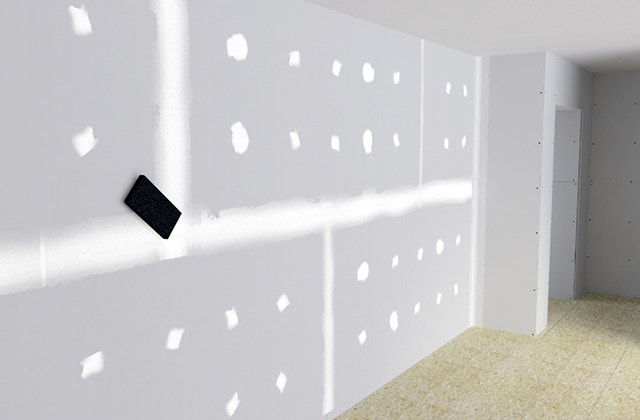1
Repair imperfections and cover screws and nails
- 1.1 - Clean any loose residue from the drywall surface, including torn or damaged paper.
- 1.2 - Check that screws are not protruding, and tighten them if necessary.
- 1.3 - For deformed nails, drive in a new nail 1 ½" away, then sink the old nail under the surface. Cut off the damaged paper.
- 1.4 - Apply a thin layer of compound over every nail and screw hole. Also cover any torn edges.
- 1.5 - With the edge of the knife, remove the excess and smooth the surface.
- 1.6 - Wait 24 hours for the compound to dry completely before applying a second coat.















